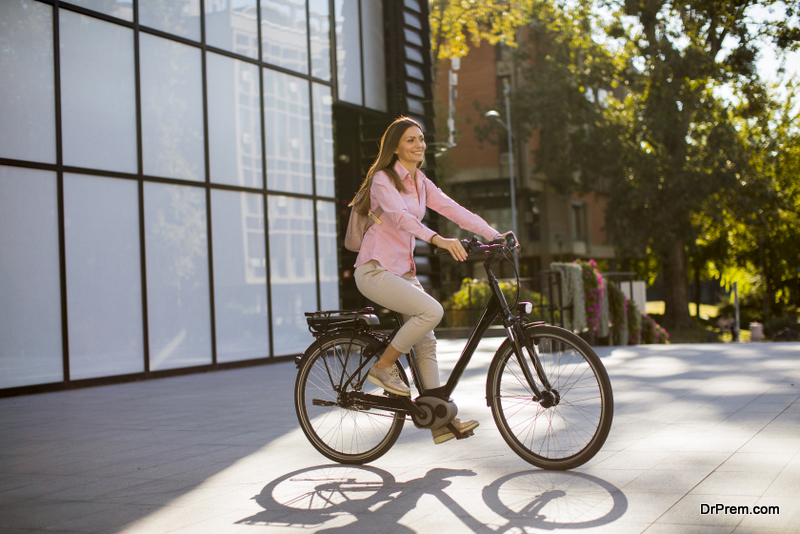How to Reduce the Environmental Impact of Your Commute
If you’re still working in a physical office, you’ll need to commute – and in a car, by yourself, that commute will be producing harmful emissions the whole time. Collectively, we generate millions of tons of greenhouse gases from driving our vehicles each year, and much of our time is spent just getting to and from work.
If you’re interested in reducing your contributions to these figures, or if you’re just interested in finding a healthier, more invigorating way to get to work, there are several possible positive changes you can make.
1. Work from Home
One of your best options is to simply start working from home. If you have a job that can be done remotely, there’s no reason why you shouldn’t be able to do it remotely at least some of the time. When working from home, you won’t have to commute to the office at all, reducing your environmental impact to zero – but you’ll also enjoy a host of other benefits, including reduced stress, more time with your family, and more flexibility to create the workspace you’ve always wanted.
For most workers, the tricky part is convincing your bosses that working from home is a good idea. Make the pitch with your employer’s perspective in mind; explain that you feel like your productivity will increase and that your employer can actually save money on office supplies and upkeep in the process. If they’re reluctant to move forward, consider pitching a “one day a week” approach as a trial run to demonstrate the advantages of the arrangement.
If successful, you’ll need to spend some time building out your home office. Designate a room of your house or a section of your apartment where you can set up a desk, an ergonomic chair, and some peripheral items to make you feel professional and productive – as long as you’re shopping with a trustworthy office furniture provider, you’ll end up with some great stuff.
2. Take Public Transportation
Another option is to take public transportation. Depending on where you live, you might have access to a bussing system, a subway, or even a railway. Typically, you can purchase an extended pass to ride on these networks for weeks, or even months at a time – kind of like a subscription service. In the long run, these costs tend to be far less than the cost of maintaining a vehicle, so in a best-case scenario, you may be able to get rid of your car and rely on public transportation exclusively.
There are benefits beyond reducing your carbon emissions, as well. For example, you won’t have to deal with traffic since you’ll be bypassing it entirely. In some cases, you’ll get to work faster. Plus, you won’t be the one doing the actual driving, which means you’ll be free to read a book, check your email, or even do some work on your way to the office.
There are only a few downsides here. For starters, public transportation may not be available or may not be especially convenient in your city. On top of that, you might be subject to a strict operating schedule that doesn’t quite align with your work needs. Weigh these considerations carefully when deciding whether to move forward.
3. Bicycle
 Wherever you can drive a car, you can ride a bike. It’s definitely more comfortable and safer if you have a designated trail or bike lane, but bicycles are allowed to ride on the road. Bicycling is a bit slower than driving a car, but not by as much as you think – especially if you can use your bike to weave through gridlock on high-traffic days.
Wherever you can drive a car, you can ride a bike. It’s definitely more comfortable and safer if you have a designated trail or bike lane, but bicycles are allowed to ride on the road. Bicycling is a bit slower than driving a car, but not by as much as you think – especially if you can use your bike to weave through gridlock on high-traffic days.
This is also a great way to get cardiovascular exercise, keeping your mind and body healthy and reducing your stress along the way. The only real trouble is that you might get sweaty on your way to work – but a few minutes cleaning up and changing in the bathroom can get you ready for the day ahead.
4. Carpool
If you still feel the need to drive, or if these options aren’t available to you, one of the best options remaining is carpooling. Consider joining up with other people in your office who live near you and take turns sharing driving responsibility. You’ll reduce the number of cars on the road, get a chance to talk to your coworkers, and you might even get to enjoy the luxury of the carpool lane.
It doesn’t take much work or effort to dramatically reduce your carbon emissions when traveling to work. You might even enjoy some fringe benefits in the process, such as getting in more exercise or getting a chance to read a new book.
Article Submitted By Community Writer
creditSource link
